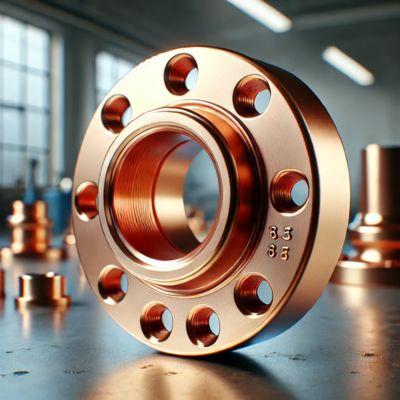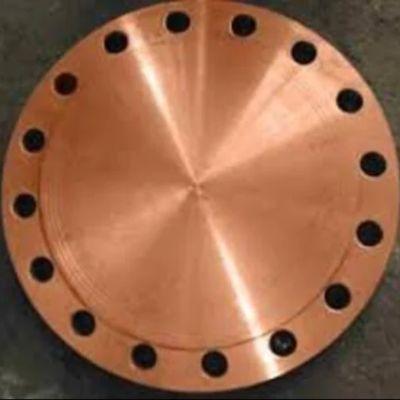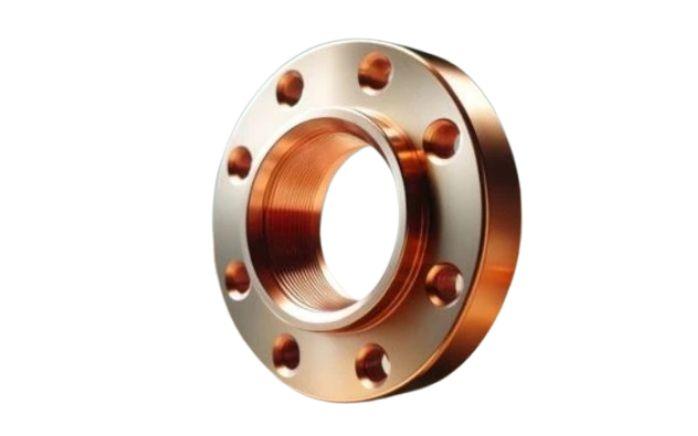Copper Flange
Minimum Order : 500 Items
Customization as per requirements
Copper Flange – Specification
| Flanges Types | Slip On, Companion, Weld Neck, Lap Joint, Long Weld Neck, Threaded, Blind |
|---|---|
| Class | 150 Lbs, 2500 Lbs Asa 150, 100, 300 Lbs, 600 Lbs, Asa 300, 900 Lbs, Pn 6, 1500 Lbs, 10, 16, 25, 40, 64, 160 |
| Size | 1/2″ (15 Nb) |
| Type | Raised Face (rf), Lap Joint Face (ljf), Small Male Female (smf), Groove, Flat Face (ff), Large Male Female (lmf), Large Tongue & Groove, Ring Type Joint (rtj), Small Tongue |
Copper Flange Manufacturer in India
Type of Sub-products

Copper Socket Weld Flanges Copper Socket Weld Flanges
Copper Socket Weld Flanges are specialized fittings designed for connecting copper pipes in high-pressure applications, offering durability and a secure, leak-proof joint.

Copper Blind Flanges Copper Blind Flanges
Copper Blind Flanges are solid, circular plates used to seal pipe ends or block flow in copper piping systems, ensuring safety and system integrity.
Frequently Asked Questions
What is a copper flange?
Specialized copper flanges are used in plumbing and piping systems to join pipes or other components. These flanges, usually composed of copper alloys, have a flat, circular disc with bolt holes placed uniformly around the edge. They can be securely fastened using bolts or welding since they are made to be fastened to the ends of pipes or other equipment. Copper flanges have multiple functions, such as making pipe systems more accessible to assemble and disassemble, providing a sealing surface to stop leaks, and enabling the attachment of extra parts like valves or instruments. Copper flanges are extensively used in many industries where dependability and durability are crucial due to their resistance to corrosion, thermal conductivity, and adaptability.
How are copper flanges installed?
The pipes or equipment that has to be connected must first have their mating surfaces cleaned and cleared before installing copper flanges. The flange gaskets are then positioned to provide a seal between the mating surfaces. To firmly hold the copper flanges in place, bolts are put through the holes in the mating surfaces in line with them. A steady, leak-free connection can be achieved by carefully and evenly tightening the bolts. Additional sealing techniques, such as soldering or welding, may be used, depending on the application, to improve the security and integrity of the connection. Regular maintenance and inspections are recommended to guarantee the copper flange installation's continued dependability and functionality.
What are the various types of copper flange?
Various copper flange types meet diverse needs in piping and plumbing systems. The long neck of weld neck flanges allows for high-pressure applications, giving the joint strength and structural support. Perfect for low-pressure applications, slip-on flanges slide over the pipe and are fastened using fillet welds on both the inside and exterior. Threaded flanges are ideal for small-bore piping systems because their internal threads match the external threads of the pipe, making assembly simple and requiring no welding. To provide a smooth flow channel, socket weld flanges are similar to slip-on flanges but feature a recessed section to fit the pipe's end. Lap joint flanges comprise a backing flange and a stub end. This design reduces joint stress and makes alignment and assembly simple. These various copper flange types provide adaptability and flexibility to satisfy the requirements of piping systems in various industries.
Get Quote Instantly
Countries We Export – Copper Flange
- India
Cities We Supply – Copper Flange
- Ahmadpur
- Ahmadnagar
- Ahmedabad
- Bangalore Urban
- Bangalore Rural
- Bengaluru
- Coimbatore
- Chennai
- Chandigarh
- Haridwar
- Hyderabad
- Jaipur
- Jodhpur
- Jodhpur (ahmedabad)
- Kalyan
- Kolhapur
- Mumbai
- Mumbai Suburban
- Murud (raigad)
- Nagpur
- Lucknow
- New Delhi
- Navi Mumbai
- Kolkata
- Nashik
- Pune
- Raipur
- Rajkot
- Rampura
- Sion, Mumbai
- Surat
- Thane
- Varanasi
- Visakhapatnam
- Moradabad
- Angul
- Rudrapur
- Hosdurg
- Gandhinagar
- Rajahmundry
- Durgapur
- Bharuch
- Panipat
Industries We Serve – Copper Flange
Sugar
Oil And Gas Industries
Paper Mill
Power Plant
Bridge And Building
Aerospace Industries
Automobile Industry
Electrical Industry
Defense Industry
Construction & Fabrications
Ring Man Units
Railways

Gasket Industry
Pharmaceuticals Industry













